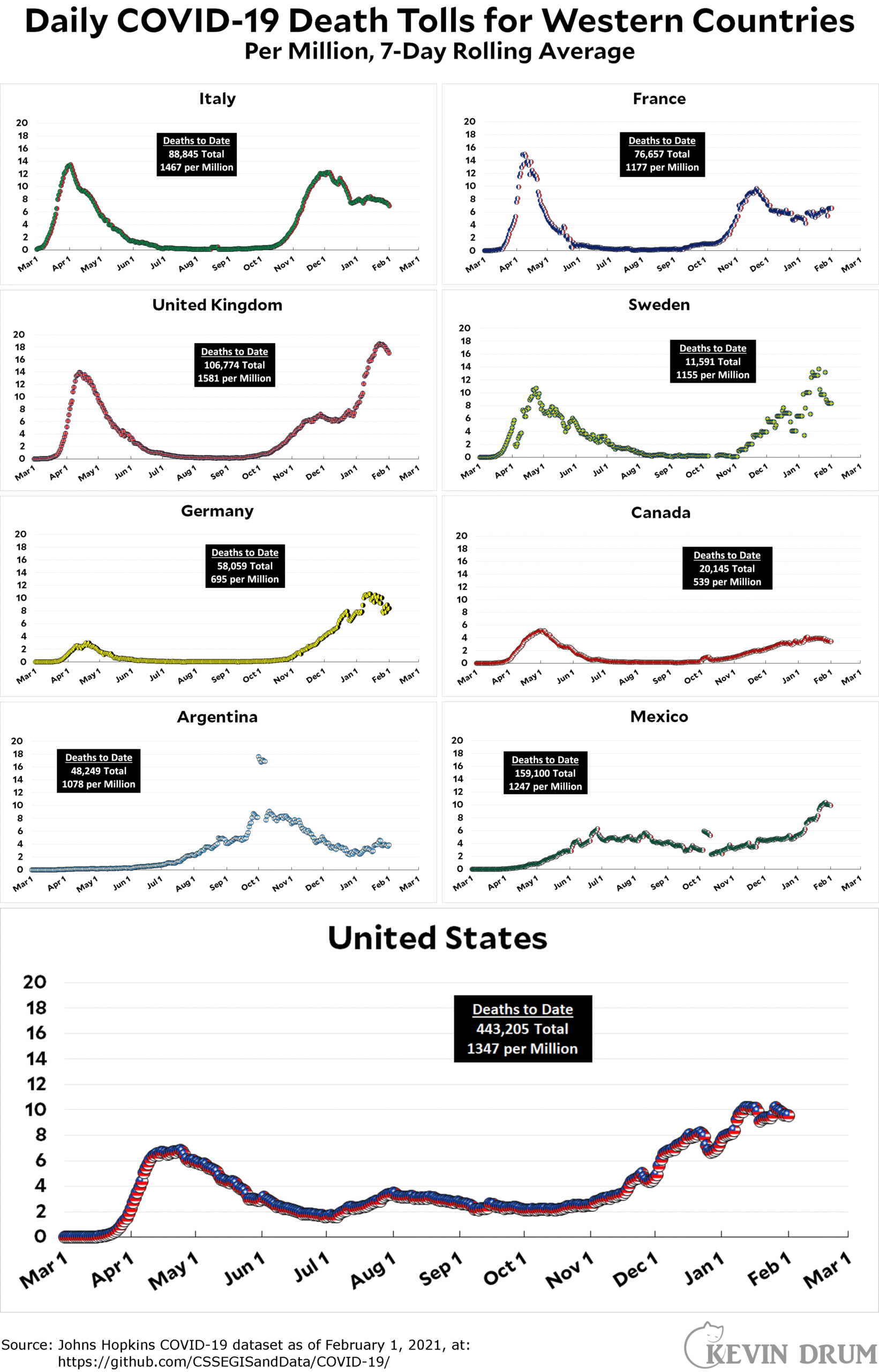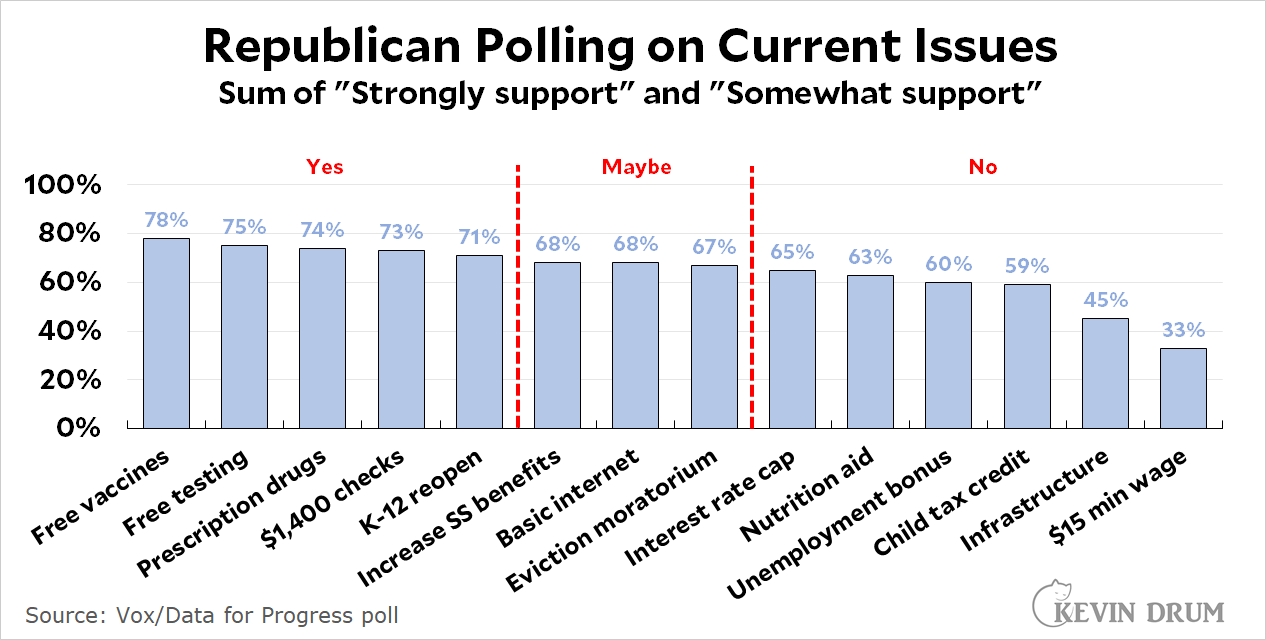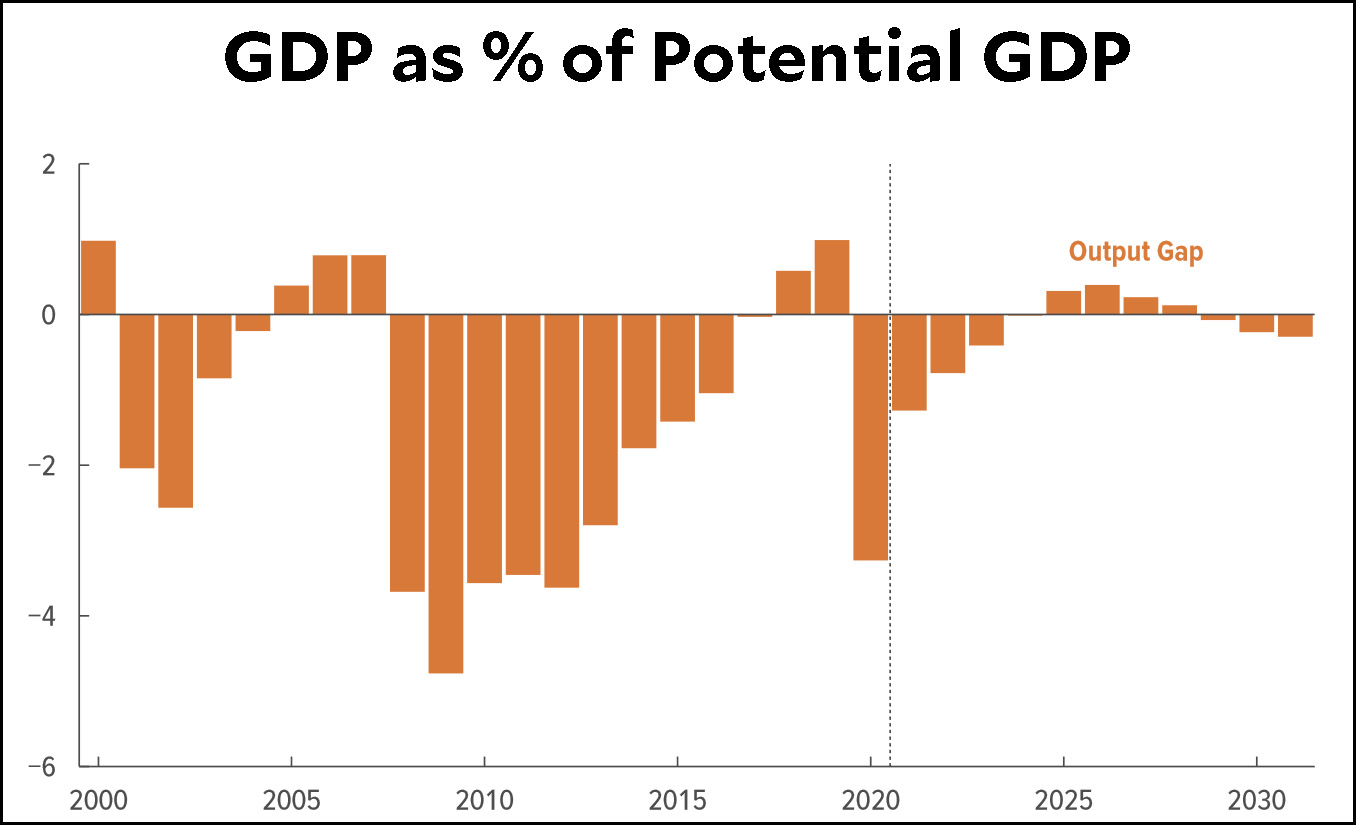Dan Froomkin of PressWatch wrote a widely-linked piece yesterday about the role of the press in modern-era Washington. Here's a piece of it, framed as a speech that a new editor delivers to her newsroom:
First of all, we’re going to rebrand you. Effective today, you are no longer political reporters (and editors); you are government reporters (and editors)....Historically, we have allowed our political journalism to be framed by the two parties. That has always created huge distortions, but never like it does today.
....Defining our job as “not taking sides between the two parties” has also empowered bad-faith critics to accuse us of bias when we are simply calling out the truth. We will not take sides with one political party or the other, ever. But we will proudly, enthusiastically, take the side of wide-ranging, fact-based debate.
....Political journalism as we have practiced it also too often emphasizes strategy over substance. It focuses on minor, incremental changes rather than the distance from the desirable – or necessary — goal. It obfuscates, rather than clarifies, the actual problems and the potential solutions.
....Tiresomely chronicling who’s up and who’s down actually ends up normalizing the status quo. I ask you to consider taking — as a baseline — the view that there is urgent need for dramatic, powerful action from Washington, not just when it comes to the pandemic and the economic collapse, but regarding climate change and pollution, racial inequities, the broken immigration system, affordable health care, collapsing infrastructure, toxic monopolies, and more.
The reason I'm highlighting this is because it distills a widely held belief on the left: namely that national political reporters are consumed with both-siderism; horse race coverage; faux balance; and giving too much exposure to bad faith arguments. Instead, as Froomkin suggests, they should take a broader view that downplays insider politics and instead focuses on the big picture.
But there's a problem here: we already have media outlets that do this. They're called monthly magazines, which often focus on analysis and broad trends.
By contrast, a daily newspaper (or TV news show) reports on the news. That is, the stuff that happened that day. This is totally legitimate, since lots of people want to know what's happening on a day-to-day basis. In fact, since you're reading this on the internet, you're most likely someone who wants to keep up with the news on an hour-by-hour basis. Waiting a whole day is for your grandparents, amirite?
So what's a daily political reporter to do? If President Biden proposes a $1.9 trillion coronavirus bill, you have to report it. If a group of Republicans counteroffers with $600 billion, you have to report that. And if Biden agrees to meet with them, once again we have news. And there's really no way to report this except through a partisan lens. The entire thing is fundamentally driven by the fact that Democrats and Republicans disagree about what should be in the package. And as with so many things, there is no disembodied truth about who's right.
Unless, of course, you simply assume that liberals are always right, as Froomkin gives away in the last paragraph I excerpted. If that had been written by a conservative, it would look something like this:
I ask you to consider taking — as a baseline — the view that there is urgent need for dramatic, powerful action from Washington, not just when it comes to the pandemic and the economic collapse, but regarding a ballooning welfare state, a stifling culture of political correctness, a broken immigration system, and increasing hostility to religious freedom.
There's something to the lefty critique of political reporters, but not because they report the news that actually happens on a daily basis. Nor because they ignore background and context. Generally speaking, I find that they usually do a good job on that score. For my money, I'd say they spend too much time on Twitter and too much time printing rumors from anonymous sources without much backup.
I am, of course, talking here about legitimate news outlets like the New York Times or CBS News. I am decidedly not talking about places like Fox News, which don't even attempt to provide any kind of balanced treatment of the day's events. That's a whole different topic.






